Udine: un taj di chèl bon
What drives me to arm myself with a camera and shoot Italy documenting all its beautiful facets? The passion I have for reportage, a good preparation, propensity and lots and lots of patience. These are the ingredients that pushed me to create Pronti Partenza Via, the series of documentaries that you have been able to see and read here on Finestre sullArte and that led me to create aulterior series, more dynamic, fast and immediate: the Pronti Partenza Via trips with which I continue the journey to discover Italy, its villages, folklore, events and art.
Silvia and I went to Udine and were able to tell in one day everything we think is worth visiting in the capital of Friuli. Attention!!! You heard right, capital of Friuli, not of the Friuli Venezia Giulia Region, which we know is Trieste. Friuli is a territorial region where people still speak their own language (woe to call it a dialect), Friulian precisely.
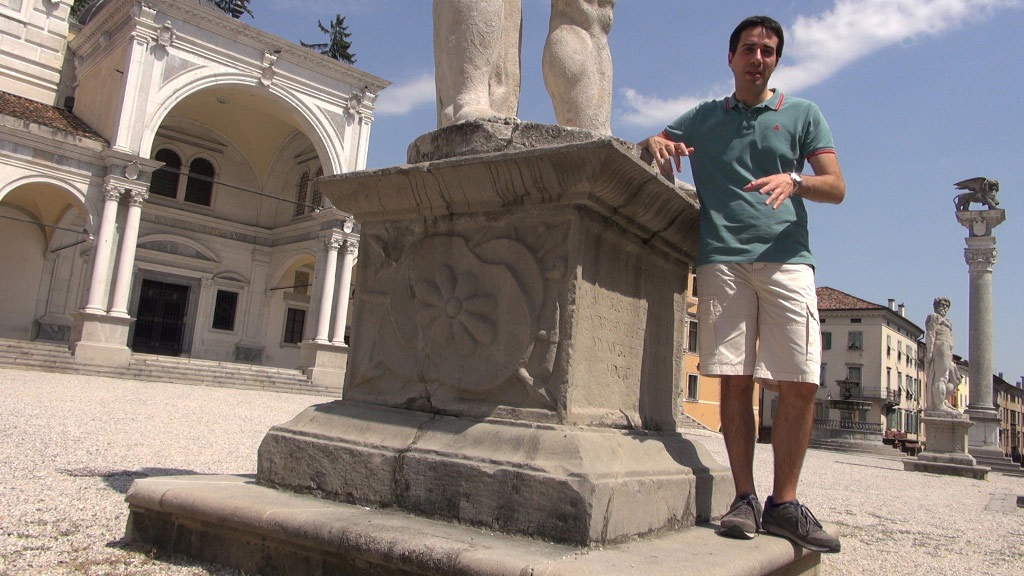 |
| Fabrizio in Udine in Piazza Libertà |
Udine at the center of this territory is anelegant city, known among other things for being the treasure chest of Gianbattista Tiepolo, who spent his youth here and began his brilliant career as a painter. Udine is also known for being chosen in the 13th century as the seat of the Patriarchs of Aquileia, who settled in the castle overlooking the moraine hill over the city. The present building replaces one that was destroyed in 1511; since 1906 the Civic Museums and Galleries of History and Art have been housed in the castle, with the Archaeological Museum, the Gallery of Ancient Art, the Gallery of Drawings and Prints, the Friulian Museum of Photography and the Photo Library. The Archiepiscopal Palace, on the other hand, to which the Patriarchs of Aquileia decided to move from the 16th century, now houses the Diocesan Museum and the Tiepolo Galleries with many of his frescoes from his early age, dated 1726-1729.
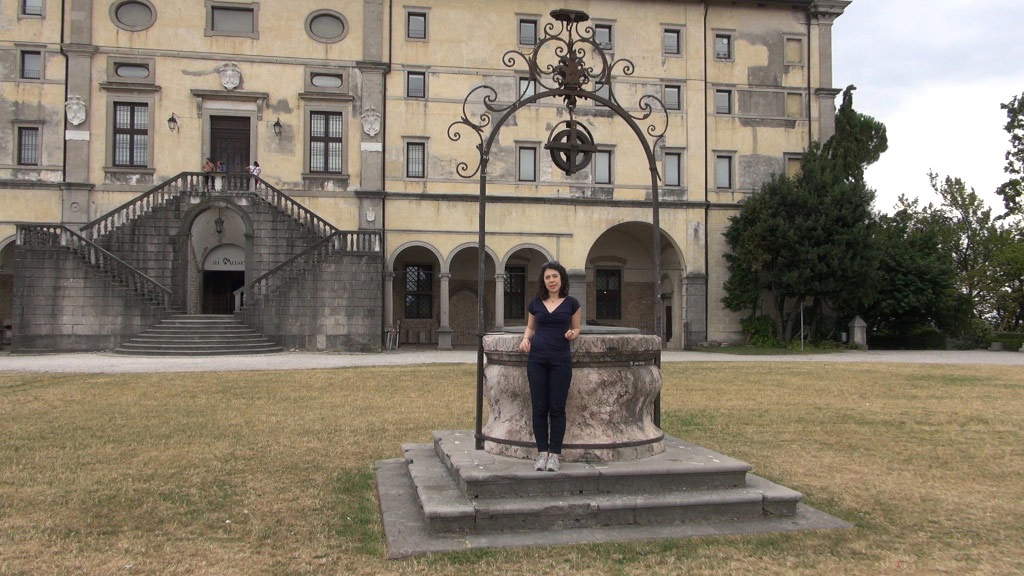 |
| Udine Castle |
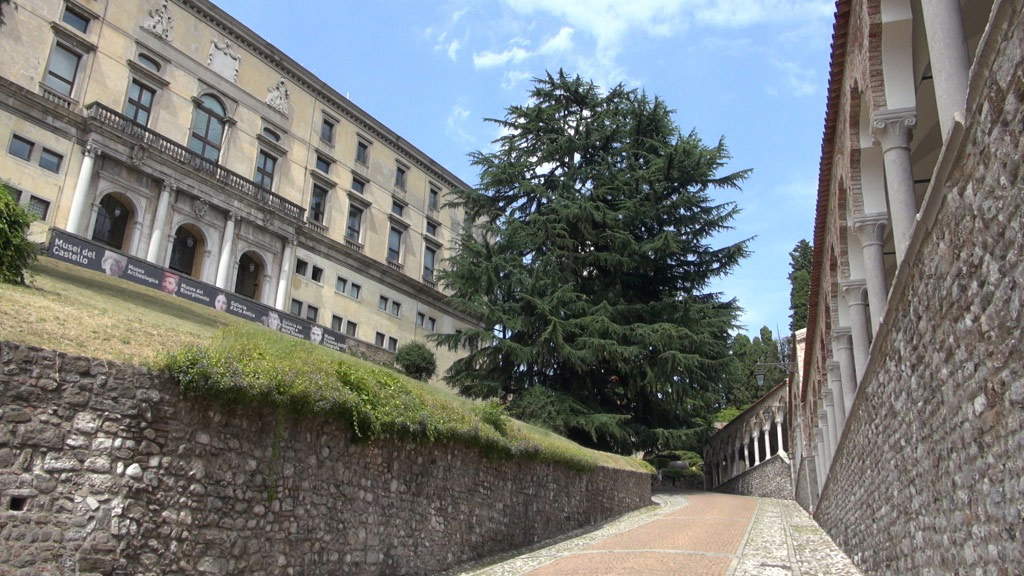 |
| The Lippomano portico on the ascent towards the Castle |
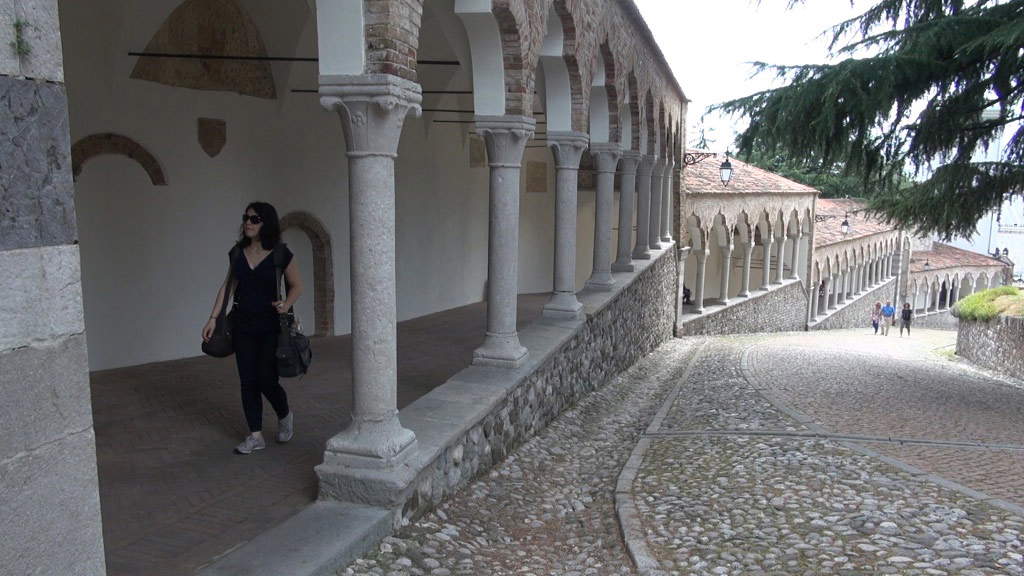 |
| The Ascent to the Castle |
Other masterpieces by Tiepolo we were able to admire inside the Duomo, the city’s most important and imposing church begun in 1236 and completed in Baroque forms in the 16th century. To the right of the Duomo stands the 18th-century Oratorio della Purità , consisting of a lower floor in which a church was built and an upper floor intended as an oratory for girls. The interior decorations are the work of Giambattista Tiepolo and his son Giandomenico. The latter was particularly concerned with the paintings on the walls in chiaroscuro on a gold background depicting episodes from the Bible.
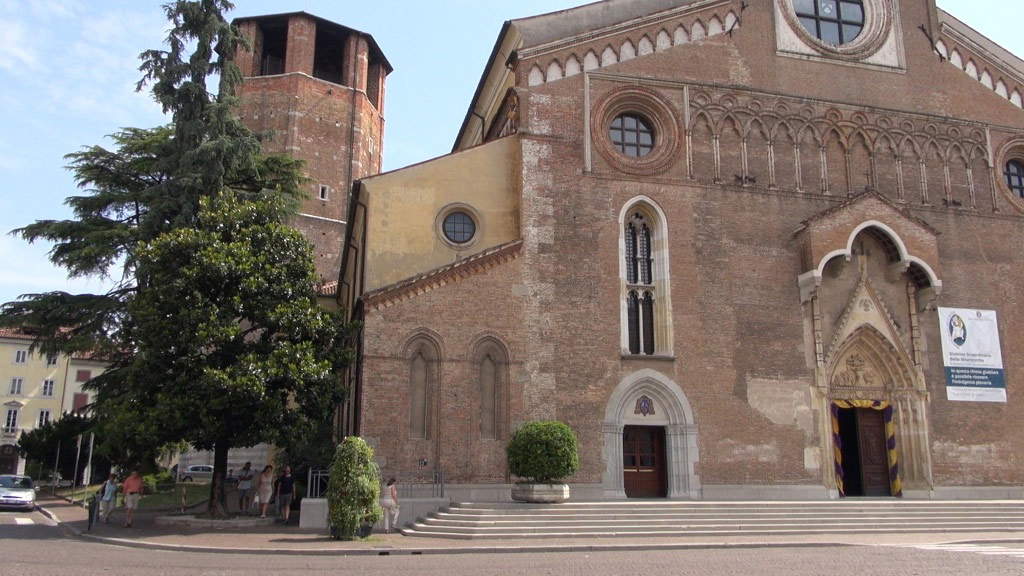 |
| The Cathedral of Udine |
The heart of the city is Piazza Libertà , located at the foot of the Castle, which has had its name changed several times: in the Middle Ages it was called Piazza del Vino because there was a dedicated market here; in 1350 it took the name Piazza del Comune because at the time it was the seat of the City Council. In 1550, with the arrival of the Venetians, it was called Piazza Contarena in honor of one of the lieutenants; while in 1866, with the unification of Friuli to Italy, it was named after Victor Emmanuel II. Only after World War II was it given its present name.
It is called the most beautiful Venetian-style square on the mainland and is a harmonious complex of Renaissance buildings. The Town Hall is also called the Loggia del Lionello because it was designed by Nicolò Lionello from Udine and was erected in Gothic-Venetian forms clad with white and pink bichrome marble.
On the opposite side, the 1533 San Giovanni portico leads to the San Giovanni chapel dedicated to the fallen soldiers. Next to it is the Clock Tower, by Giovanni da Udine and dated 1527, surmounted by statues of two Moors striking the hours.
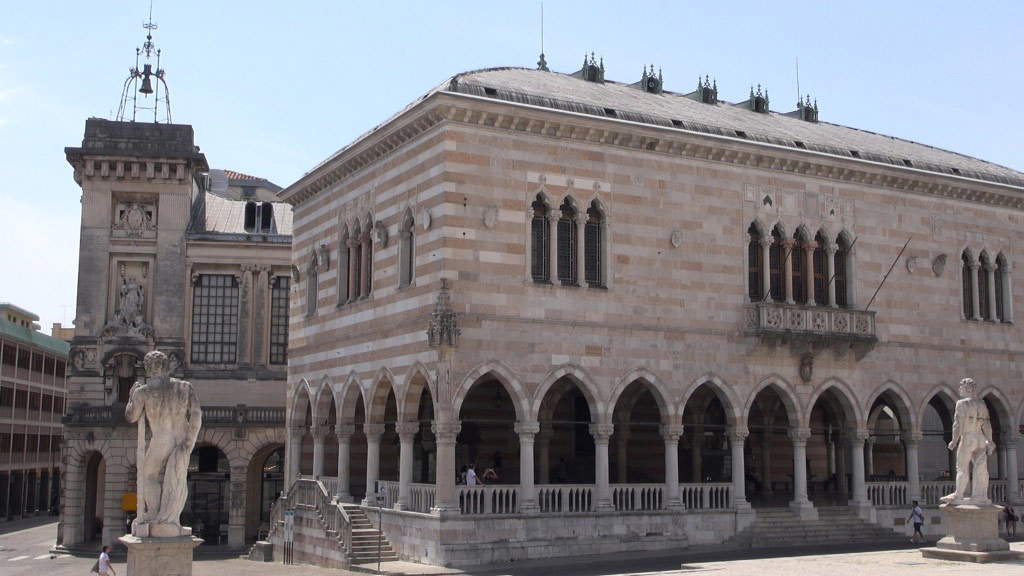 |
| The Loggia of the Lionello |
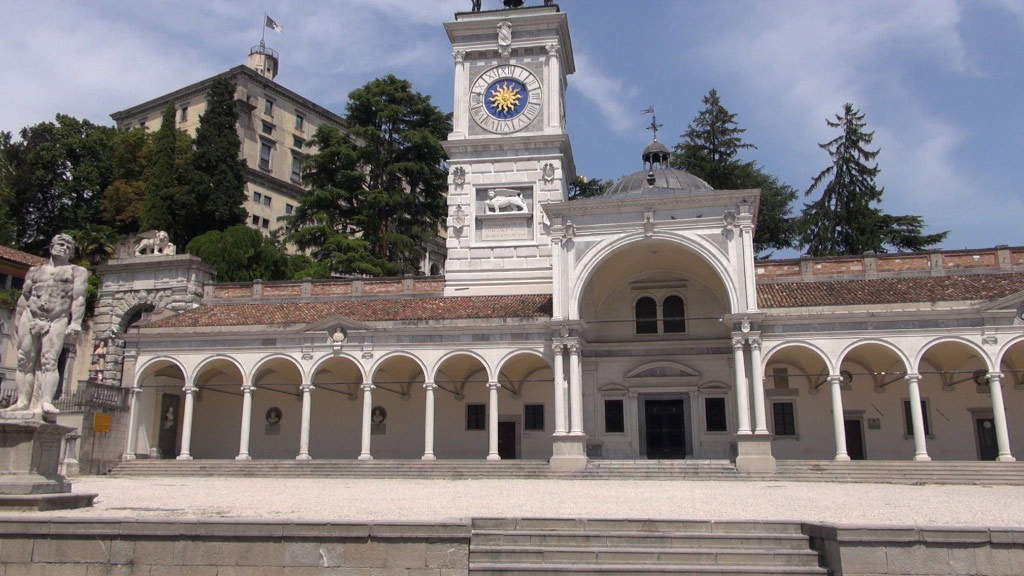 |
| The Loggia of San Giovanni |
The Bollani Arch surmounted by a Venetian Lion, built to a design by Andrea Palladio in 1556, marks the entrance to the castle complex, within which, in addition to the aforementioned palace, we find the Church of Santa Maria di Castello with its bell tower topped by the bronze Angel giravento, the symbol of Udine.
Do not forget to pass through the beautiful Piazza Matteotti (once Piazza delle Erbe), all surrounded by arcades, it looks like an open-air living room. Right here the all-Friuli ritual of tajut is not to be missed: a good glass of wine to be enjoyed in a convivial atmosphere. In the late afternoon, after work, people in fact gather in the typical taverns of the center to drink, as they say in the Friulian language, a taj di chel bon. Just like that, hoping to have done something pleasing, we wanted to title this video of ours. Prosit!
Warning: the translation into English of the original Italian article was created using automatic tools. We undertake to review all articles, but we do not guarantee the total absence of inaccuracies in the translation due to the program. You can find the original by clicking on the ITA button. If you find any mistake,please contact us.





























